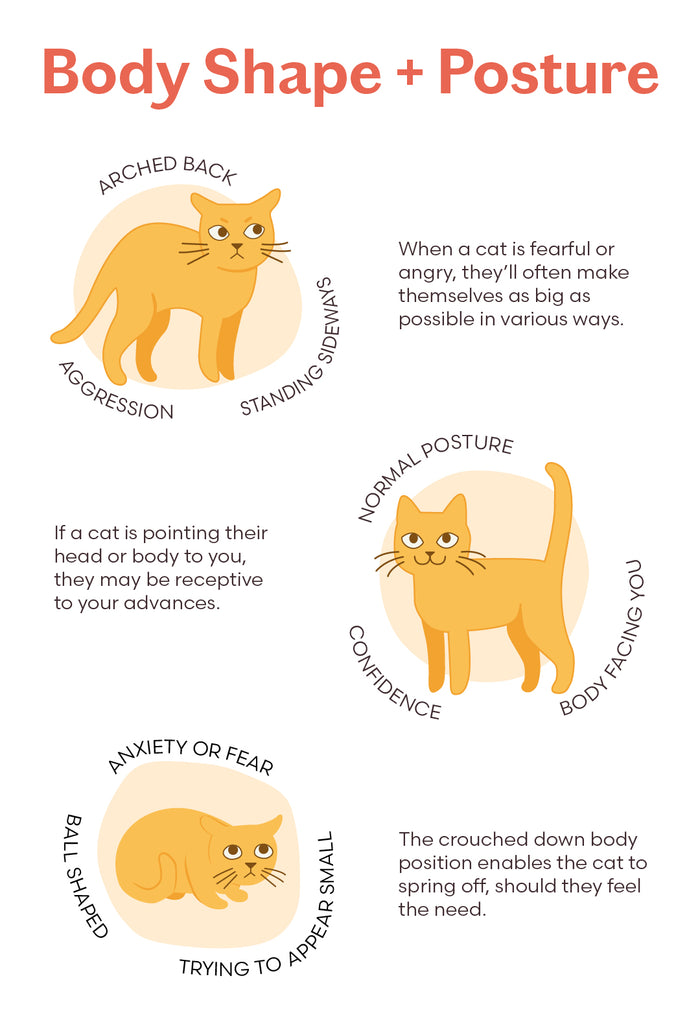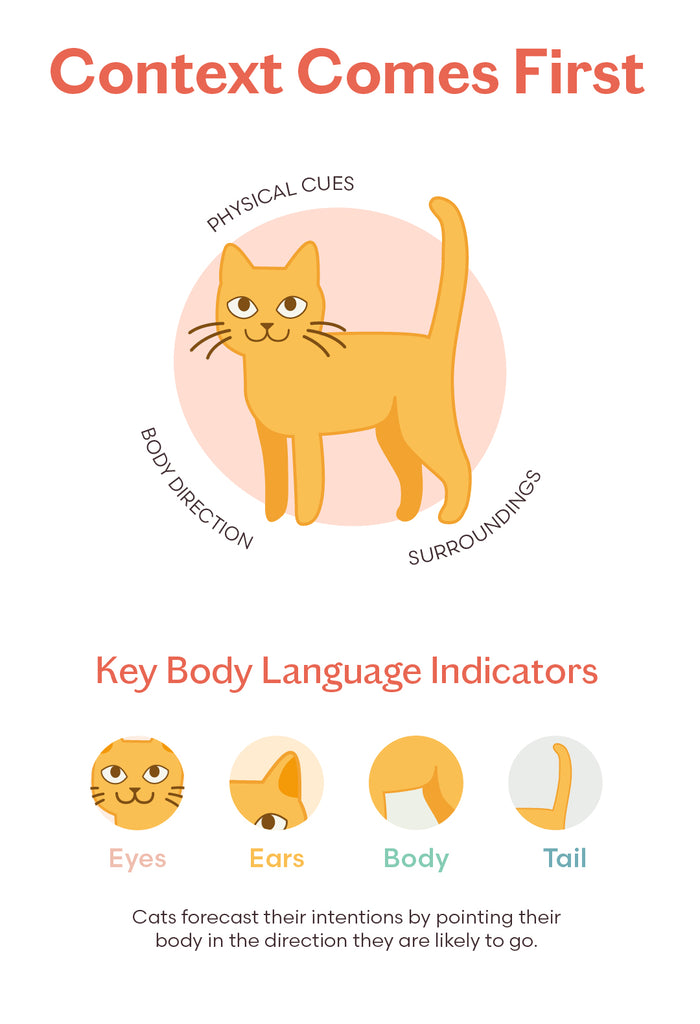Persian Cat Behavior: Decoding Their Signals
Have you ever wondered what your Persian cat is trying to tell you with its behavior? Cats can be mysterious creatures, and decoding their signals can sometimes feel like solving a puzzle. But fear not, because in this article, we’re going to dive into the world of Persian cat behavior and unravel their secret language.
Persian cats are known for their unique temperament and behaviors. From their affectionate purring to their independent nature, there’s always something fascinating happening with these elegant felines. We’ll explore why Persian cats tend to be more laid-back and calm compared to other breeds, and how their grooming habits can reveal their state of mind.
But that’s not all. We’ll also delve into their communication cues, such as tail movements, ear positions, and vocalization. Understanding these signals will not only help you establish a deeper bond with your Persian cat but also ensure their well-being and happiness.
So, if you’re eager to discover the secrets behind your Persian cat’s behavior and learn how to interpret their signals, stay tuned for the upcoming articles on Persian Cat Dude. We’ll take you on a journey of exploration, providing reliable information and answering the most common questions about Persian cat behavior along the way. Your understanding of your feline friend is about to reach a whole new level!

Persian Cat Behavior: Decoding Their Signals
If you are a proud owner of a Persian cat or are considering bringing one into your home, understanding their behavior is key to building a strong bond with your feline friend. Persian cats are known for their unique personalities and distinct behaviors, and decoding their signals is crucial for effective communication. In this article, we will delve into the fascinating world of Persian cat behavior and help you decipher what your furry companion is trying to tell you.
Understanding Persian Cat Behavior
Before we dive into decoding their signals, let’s take a moment to understand the basic principles of Persian cat behavior. These beautiful cats are known for their calm and gentle nature. They thrive on stability and consistency, preferring a quiet and peaceful environment. Persian cats are typically on the more independent side and enjoy their alone time, but they also love to bond with their human companions.
The Language of Persian Cats
Like all animals, Persian cats have their own unique language of communication. They communicate through various signals, including body language, vocalizations, scents, and markings. By paying attention to these signals, you can gain valuable insights into your Persian cat’s emotional state and needs.
Body Language Signals
Body language is an essential part of Persian cat communication. Paying attention to their posture and movements can give you valuable clues about how they are feeling. Here are a few body language signals to look out for:
-
Tail Position: A relaxed and downwards tail indicates a content Persian cat. If their tail is standing erect, it may mean they are excited or agitated. A flicking or twitching tail can indicate annoyance or anticipation.
-
Ear Position: If your Persian cat’s ears are relaxed and facing forward, it means they are at ease. However, if their ears are flattened against their head, it may be a sign of fear or aggression.
-
Eye Contact: Direct eye contact from your Persian cat is a sign of trust and affection. However, prolonged staring may be interpreted as a challenge.
-
Posture: A relaxed and open posture indicates that your Persian cat is comfortable in their environment. If they are crouched low or hiding, it may mean they are scared or anxious.
Vocal Signals
Persian cats are not the most vocal of feline breeds, but they do communicate through various sounds. Understanding their vocal signals can help you decipher their needs and emotions. Here are some common vocalizations and what they may mean:
-
Purring: Persian cats are known for their melodious purrs, which indicate contentment and relaxation. It can also be a sign of submission and an invitation to bond.
-
Meowing: While not as vocal as other breeds, Persian cats may meow to get your attention or express their needs, such as hunger or a desire for affection.
-
Hissing and Growling: Hissing and growling are clear signals of fear or aggression. Your Persian cat may exhibit these vocalizations when they feel threatened or uncomfortable.
Scents and Markings
Persian cats use scents and markings to communicate with other cats and mark their territory. They have scent glands located on various parts of their body, such as their cheeks and paws. By rubbing against objects or their human companions, Persian cats leave their scent and establish their presence. This behavior helps them create a familiar and secure environment.
Common Behaviors and What They Mean
Persian cats engage in various behaviors that may seem puzzling at first. However, understanding the meaning behind these actions can provide valuable insight into their emotional state. Here are a few common behaviors and their potential meanings:
-
Kneading: When your Persian cat kneads you with their paws, it is a sign of contentment and relaxation. This behavior often stems from their kittenhood, where they used to knead their mother’s belly to stimulate milk flow.
-
Grooming: Persian cats are meticulous groomers and spend a significant amount of their time cleaning themselves. Grooming is not only a hygienic practice but also a way for your cat to relax and show self-care.
-
Headbutting: If your Persian cat gently bumps their head against you, they are showing affection and marking you as part of their territory. It is a loving gesture that signifies trust and bond.
-
Scratching: Scratching is a natural behavior for cats, and Persian cats are no exception. By scratching, they are not only sharpening their claws but also marking their territory and stretching their muscles. Providing appropriate scratching posts can redirect this behavior to prevent damage to your furniture.
Bonding and Affection
Persian cats are known for their love and affection towards their human companions. Building a strong bond with your Persian cat requires patience, understanding, and respect for their individual needs. Here are a few tips to strengthen your bond:
-
Provide a Safe Space: Create a quiet and comfortable space for your Persian cat to retreat to when they need alone time. This will help them feel secure and build trust.
-
Quality Time: Spend regular one-on-one time with your Persian cat, engaging in activities they enjoy. This can include gentle grooming sessions, interactive playtime, or simply lounging together.
-
Respect Boundaries: Persian cats value their personal space, and it’s essential to respect their boundaries. Avoid overly forcing affection and allow them to come to you on their terms.
Aggression and Fear
While Persian cats are generally calm and gentle, they may exhibit aggression or fear in certain situations. It’s important to understand the underlying causes of these behaviors to address them effectively. Here are a few potential reasons for aggression and fear in Persian cats:
-
Lack of Socialization: Persian cats that have not been adequately socialized during their early development stages may display fear or aggression towards unfamiliar people or animals.
-
Medical Issues: Sometimes, aggression and fear can be a result of underlying medical issues. If your Persian cat’s behavior suddenly changes, it’s crucial to consult a veterinarian to rule out any health concerns.
-
Traumatic Experiences: Persian cats that have experienced trauma or abuse in the past may be more prone to aggressive or fearful behaviors. Patience, understanding, and a calm environment can help them overcome these challenges over time.
Playful Behavior
Despite their calm demeanor, Persian cats do enjoy playtime and interactive activities. Engaging in regular play sessions not only provides physical exercise but also stimulates their minds and strengthens the bond between you and your furry friend. Here are a few playful behavior patterns you may observe in Persian cats:
-
Chasing and Pouncing: Persian cats have a strong prey drive and may engage in chasing and pouncing behaviors. Using interactive toys or laser pointers can provide an outlet for this natural instinct.
-
Playing with Objects: Persian cats often find joy in playing with small objects like balls or toy mice. These playful behaviors help them satisfy their hunting instincts and provide mental stimulation.
Communication with Humans
Persian cats are keen observers of human behavior and can pick up on subtle cues. They are known to be intuitive and responsive to their human companions. By developing a mutual understanding, you can communicate effectively with your Persian cat. Here are a few tips for better communication:
-
Tone and Body Language: Persian cats can pick up on your tone of voice and body language. Using a calm and soothing tone and maintaining a relaxed posture can help put your cat at ease.
-
Eye Contact: Making eye contact without staring directly into their eyes can help establish trust and initiate communication with your Persian cat.
-
Positive Reinforcement: Rewarding desired behaviors with praise, treats, or gentle strokes can reinforce positive communication and strengthen your bond.
Understanding Emotional States
Like all animals, Persian cats experience a range of emotions. Recognizing their emotional states can help you provide the care and support they need. Here are a few common emotional states your Persian cat may exhibit:
-
Contentment: A relaxed and purring Persian cat indicates contentment and satisfaction with their environment.
-
Anxiety: Signs of anxiety in Persian cats include excessive grooming, hiding, excessive vocalization, or aggressive behaviors. Identifying the source of anxiety and providing a calm and secure environment can help alleviate these symptoms.
-
Affection: Persian cats often show affection through gentle headbutts, rubbing against your legs, or kneading. Recognizing and reciprocating their affection can strengthen your bond.
Behavioral Problems and Solutions
Persian cats, like any other pet, may occasionally exhibit behavioral problems. Identifying the underlying causes and addressing them promptly can minimize these issues. Here are a few common behavioral problems and potential solutions:
-
Litter Box Issues: Persian cats are known for their cleanliness, and any deviation from their litter box habits may indicate an underlying problem. Ensure the litter box is clean and easily accessible, and consult a veterinarian if issues persist.
-
Destructive Scratching: If your Persian cat is excessively scratching furniture or carpets, providing appropriate scratching posts and redirecting their behavior can help preserve your belongings.
-
Excessive Vocalization: While Persian cats are not extremely vocal, excessive meowing may indicate underlying issues such as hunger, discomfort, or loneliness. Ensuring their needs are met and spending quality time with them can alleviate this behavior.
Training and Socialization
Training and socialization are essential aspects of raising a well-behaved Persian cat. Starting early and employing positive reinforcement techniques can help shape their behavior. Here are a few training tips:
-
Basic Commands: Teach your Persian cat basic commands like “sit,” “stay,” and “come” using rewards and praise.
-
Handling and Grooming: Introduce your Persian cat to being handled and groomed from a young age. This will make routine grooming sessions more comfortable for both of you.
-
Positive Reinforcement: Reward desired behaviors with treats, praise, or playtime to reinforce positive behavior.
Conclusion
Understanding and decoding Persian cat behavior is the key to building a strong and harmonious relationship with your feline companion. By paying attention to their body language, vocal signals, and needs, you can create a nurturing environment that meets their emotional and physical needs. Remember, each Persian cat is unique, and it may take time and patience to establish effective communication. But with love, care, and understanding, you can create a bond that will last a lifetime.

Questions and Answers
Q1: How do I know if my Persian cat is happy? A1: A happy Persian cat will exhibit relaxed body language, purr contentedly, and engage in affectionate behaviors such as gentle headbutts or rubbing against your legs.
Q2: Why does my Persian cat knead me? A2: Kneading is a behavior that stems from their kittenhood when they kneaded their mother’s belly to stimulate milk flow. Kneading you is a sign of contentment and relaxation.
Q3: How can I bond with my Persian cat? A3: Spending quality time with your Persian cat, providing a safe space, and respecting their boundaries are key to building a strong bond. Engage in activities they enjoy and shower them with love and affection.
Q4: Why is my Persian cat excessively grooming itself? A4: Excessive grooming in Persian cats can be a sign of anxiety or boredom. Ensuring they have a stimulating environment and addressing any underlying stressors can help alleviate this behavior.
Q5: Why does my Persian cat meow a lot? A5: While Persian cats are not as vocal as other breeds, excessive meowing may indicate hunger, loneliness, or discomfort. Ensuring their needs are met and providing companionship can alleviate this behavior.
Q6: How can I prevent destructive scratching in my Persian cat? A6: Providing appropriate scratching posts, redirecting their behavior, and keeping their claws trimmed can help minimize destructive scratching. Positive reinforcement for desired behaviors is also effective.
Q7: Does my Persian cat need training? A7: While not as trainable as some other breeds, Persian cats can benefit from basic training and socialization. Teaching them basic commands and rewarding good behavior can enhance their overall behavior.
Q8: How do I handle aggression in my Persian cat? A8: Aggression in Persian cats can be addressed by identifying the underlying cause, such as fear or territorial issues, and providing a calm and secure environment. Consultation with a veterinarian or animal behaviorist may be beneficial.
Q9: Should I get another pet for my Persian cat to keep them company? A9: Persian cats generally enjoy their alone time and may not necessarily require another pet for companionship. However, if you do decide to introduce another pet, ensure proper introductions and gradual bonding to prevent stress or aggression.
Q10: How can I prevent litter box issues in my Persian cat? A10: Ensure the litter box is clean, easily accessible, and located in a quiet and private area. If your Persian cat continues to exhibit litter box issues, consult a veterinarian to rule out any underlying medical concerns.

